The code posted at the bottom does a nice job of filling in a dataframe, using package tidyr, so that all ID's end up with the same number of periods, in the case of period defined as number of months ("Period_1" in the below code). Base dataframe testDF has ID of 1 with 5 periods, and ID of 50 and 60 with only 3 periods each. The tidyr code creates additional periods ("Period_1") for ID of 50 and 60 so they too have 5 Period_1´s. The code copies down the "Bal" and "State" fields so that all ID end up with the same number of Period_1, which is correct.
However, how would I extend the calendar month expression of "Period_2" in the same manner, as illustrated immediately below?
Code:
library(tidyr)
testDF <-
data.frame(
ID = as.numeric(c(rep(1,5),rep(50,3),rep(60,3))),
Period_1 = as.numeric(c(1:5,1:3,1:3)),
Period_2 = c("2012-06","2012-07","2012-08","2012-09","2012-10","2013-06","2013-07","2013-08","2012-01","2012-02","2012-03"),
Bal = as.numeric(c(rep(10,5),21:23,36:34)),
State = c("XX","AA","BB","CC","XX","AA","BB","CC","SS","XX","AA")
)
testDFextend <-
testDF %>%
tidyr::complete(ID, nesting(Period_1)) %>%
tidyr::fill(Bal, State, .direction = "down")
testDFextend
Edit: rolling from one year to the next
A better OP example would have Period 2 = c("2012-06","2012-07","2012-08","2012-09","2012-10","2013-06","2013-07","2013-08","2012-10","2012-11","2012-12"), providing an example whereby extending Period_2 causes a rollover to the next year. Below I add to the tidyr/dplyr answer below to correctly roll over the year:
library(tidyr)
library(dplyr)
testDF <-
data.frame(
ID = as.numeric(c(rep(1,5),rep(50,3),rep(60,3))),
Period_1 = as.numeric(c(1:5,1:3,1:3)),
Period_2 = c("2012-06","2012-07","2012-08","2012-09","2012-10","2013-06","2013-07","2013-08","2012-10","2012-11","2012-12"),
Bal = as.numeric(c(rep(10,5),21:23,36:34)),
State = c("XX","AA","BB","CC","XX","AA","BB","CC","SS","XX","AA")
)
testDFextend <-
testDF %>%
tidyr::complete(ID, nesting(Period_1)) %>%
tidyr::fill(Bal, State, .direction = "down")
testDFextend %>%
separate(Period_2, into = c("year", "month"), convert = TRUE) %>%
fill(year) %>%
group_by(ID) %>%
mutate(month = sprintf("%02d", zoo::na.spline(month))) %>%
unite("Period_2", year, month, sep = "-") %>%
# Now I add the below lines:
separate(Period_2, into = c("year", "month"), convert = TRUE) %>%
mutate(month = as.integer(sprintf("%02d", zoo::na.spline(month)))) %>%
mutate(year1 = ifelse(month > 12, year+trunc(month/12), year)) %>%
mutate(month1 = ifelse(month > 12 & month%%12!= 0, month%%12, month)) %>%
mutate(month1 = ifelse(month1 < 10, paste0(0,month1),month1)) %>%
unite("Period_2", year1, month1, sep = "-") %>%
select("ID","Period_1","Period_2","Bal","State")
